
“The role of a firefighter in today’s society–be it urban, rural, natural environment, volunteer, career, industrial, defense force, aviation, motorsport, or other is one of dedication, commitment, and sacrifice–no matter what country we reside and work in. In the fire service, we fight together against one common enemy–fire–no matter what country we come from, what uniform we wear or what language we speak.” –LT JJ Edmondson, firefighter, and creator of Firefighters Day
Nobody could have put what it means to be a firefighter as well as this courageous woman did. Most of us would risk our lives for those we love—family members, friends, pets. But could you imagine risking severe injury or even death for someone whom you don’t know at all? Could you imagine going into a burning building to rescue a stranger, knowing you may not come out?
Keith Haring (1958 - 1990) was an American artist and social activist known for his illustrative depictions of figures and symbols. His white chalk drawings could often been found on the blank poster marquees in New York’s public spaces and subways. “I don't think art is propaganda,” he once stated. “It should be something that liberates the soul, provokes the imagination and encourages people to go further. It celebrates humanity instead of manipulating it.”
Word of the Day
| |||
| Definition: | (noun) The trait of remaining calm and seeming not to care; a casual lack of concern. | ||
| Synonyms: | unconcern, indifference | ||
| Usage: | He looked about him always, with the cold, easy nonchalance of the man of the world. | ||
Idiom of the Day
naff off— A forceful exclamation of dismissal, disdain, or impatience. Primarily heard in UK. |
History
Richard Louis "Dick" Proenneke (1916)
An icon of wilderness living, Proenneke spent 30 years residing alone in a log cabin he built by hand in remote Twin Lakes, Alaska. His three decades of solitude there were, in fact, his retirement years. During his stay, he chronicled his daily life, keeping detailed written journals and filming his activities, like the construction of his cabin, as well as wildlife. Proenneke left Alaska in 1998, at age 82, to live out the remainder of his life with family.
Restoration of Independence of the Republic of Latvia
The Restoration of Independence of the Republic of Latvia from the USSR is marked as a national public holiday in Latvia every May 4. On that date in 1990, Latvia's Supreme Court re-declared the country a free democratic parliamentary republic. Following a transitional period, full independence was attained on August 21, 1991. Since 1920, Latvia has been acknowledged continuously by other countries as an independent state, despite occupations by Nazi Germanyfrom 1941 to 1945, and by the Soviet Union from 1940 to 1941 and 1945 to 1991
How to hunt a giant sloth-according to ancient human footprints
Rearing on its hind legs, the giant ground sloth would have been a formidable prey for anyone, let alone humans without modern weapons. Tightly muscled, angry and swinging its fore legs tipped with wolverine-like claws, it would have been able to ...READ MORE:

How to hunt a giant sloth—according to ancient human footprints
1626 - Dutch explorer Peter Minuit landed on Manhattan Island. Native Americans later sold the island (20,000 acres) for $24 in cloth and buttons.
1715 - A French manufacturer debuted the first folding umbrella.
Park
Tainter
1886 - Chichester Bell and Charles S. Tainter patented the gramophone. It was the first practical phonograph.
1905 - Belmont Park opened in suburban Long Island. It opened as the largest race track in the world.
1920 - The Symphony Society of New York presented a concert at the Paris Opera House. It was the first American orchestra to tour in Europe.
1956 - Gene Vincent recorded "Be-Bop-A Lula" in Nashville, TN.
1957 - The "Alan Freed Show" premiered on ABC-TV. It was the first prime-time network rock show.
1961 - Thirteen civil rights activists, dubbed "Freedom Riders," began a bus trip through the South.
1964 - "Another World" premiered on NBC-TV.
1970 - The Ohio National Guardsmen opened fire on students during an anti-Vietnam war protest at Kent State University. Four students were killed and nine others were wounded
1979 - Margaret Thatcher became Britain's first woman prime minister.
1987 - The First Bank of the United States was listed as a National Historic Landmark.
1991 - Phil Collins and Al Jarreau received Honorary Doctor of Music Degrees from Berklee College of Music during ceremonies in Boston.
2010 - Pablo Picasso's "Nude, Green Leaves and Bust" sold for $106.5 million.

DAILY SQU-EEK
If You Were Born Today, May 4
You are hard-working, and somewhat of a perfectionist. Stability and security are especially important to you, and many of the choices you make in life are driven by the desire to achieve these things. As a people person, you tend to feel that life is much better when shared. You are excellent at promoting cooperation and creating harmony. Famous people born today:

1796 Horace Mann, American educator, author and editor who pioneered public schools, born in Franklin, Massachusetts (d. 1859)

1928 Betsy Rawls, American golfer (US Womens Open-51, 53, 57, 60), born in Spartanburg, South Carolina

1929 Audrey Hepburn, British actress (Breakfast at Tiffany's, My Fair Lady), born in Brussels, Belgium (d. 1993)

1958 Keith Haring, American graffiti artist (Vanity Fair, Paris Review) and social activist, born in Reading, Pennsylvania (d. 1990)
1.
1930 -
OPERA SINGER, ROBERTA PETERS, IS BORN
Soprano Roberta Peters had the longest tenure
of any Metropolitan Opera soprano and worked
to popularize opera throughout her career.
2.
NOS Citrus Fair 2018
May 2-6, 2018 | San Bernardino, CA
National Orange Show Events Center|689 S E StThe NOS Citrus Fair celebrates local heroes. It boasts multiple days of fun with movie screenings, super hero costume dress up days and more. The event supports special needs individuals and their overseers (heroes). Many activities like a circus, reptile exhibit, pig racing, a petting zoo, a butterfly exhibit and juggler offer attendees tons of avenues for fun and excitement.
further information: NOS Citrus Fair - NOS Events
3.
North Charleston Arts Festival 2018
May 2-6, 2018 | North Charleston, SC
Charleston Area Convention Center & Other Venues in North Charleston|5001 Coliseum Dr North
As the most comprehensive arts festival in South Carolina, the North Charleston Arts Festival showcases and celebrates art in all its forms—from dance, music and theatre to visual arts, media arts and literature. With over 40 performances on 4 different themed stages, kid’s programs, workshops, demonstrations, exhibitions, arts & crafts vendors, a gem & mineral show, an antique show, public art installations and much more, there’s an accessible art avenue for every person to explore.
further information: North Charleston Arts Fest
4.
Washington Jewish Music Festival 2018
May 2-13, 2018 | Washington, DC
The Washington Jewish Music Festival celebrates Jewish culture and attempts to bring together the D.C. community through music. The festival features local and national musicians across a variety of genres and styles and offers educational programs in addition to live performances.
further information: About the Festival
Pictures of the day

Pied kingfisher (Ceryle rudis leucomelanurus) female, Chambal River, UP, India

A grizzly bear chasing a salmon in the river, and the salmon trying to escape jumping out of the water.
knit
thanks, Marilyn
knit
thanks, Eve
Dog Blanket Crochet Pattern and Video
knit
knit
Full Bloom Dishcloth

https://www.marymaxim.ca/books-patterns/free-patterns/free-full-bloom-dishcloth-pattern.html
crochet
thanks, Bertha
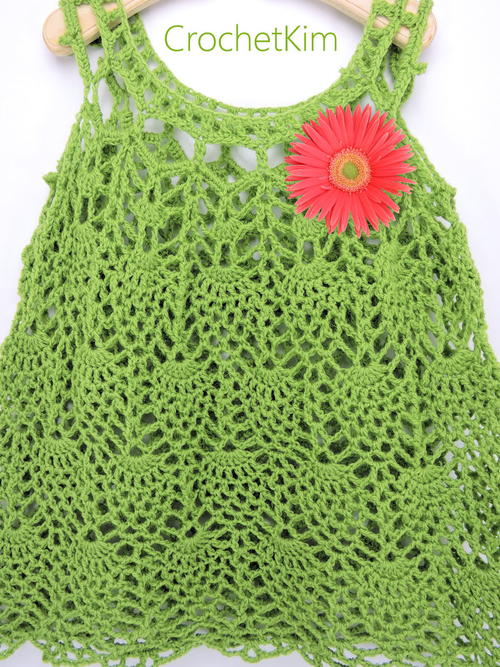
Pineapple Cascade Baby Dress
crochet
thanks, Mindy

Easy Crochet Coasters
crochet

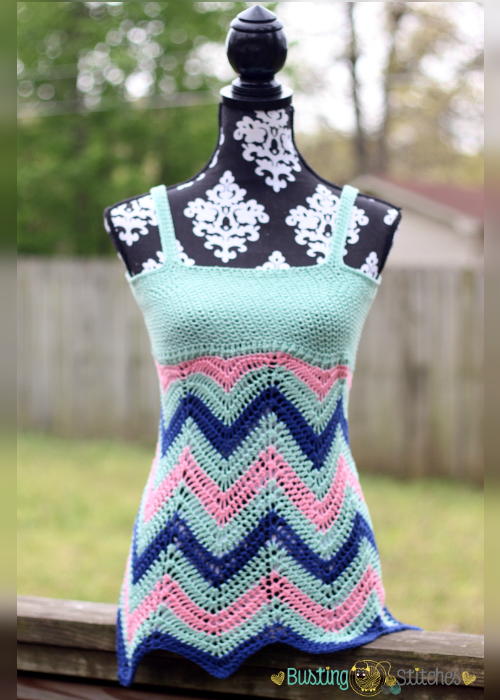
Women's Crochet Chevron Tank Top
crochet
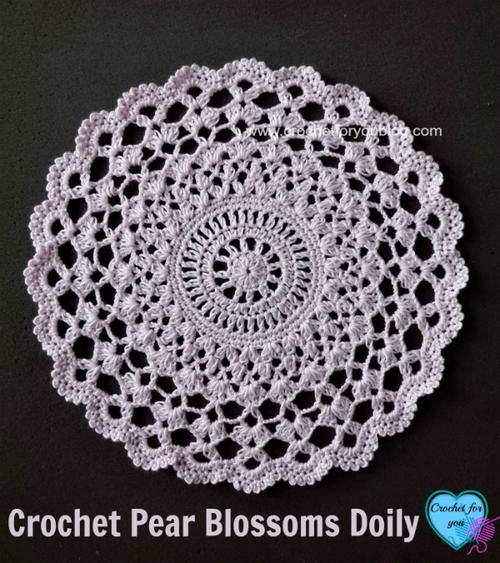
Crochet Pear Blossoms Doily
RECIPE
thanks, Heide
Heide's Sloppy Joes
1 lb turkey or beef ground
2 chopped onions
2 tsp olive oil
1/2 cup chopped carrots
1/2 cup chopped red or green pepper
1/2 cup chopped celery
1 cup canned tomatoes with chilies
1 Tbsp Worcestershire
2 Tbsp tom paste
2 tsp red wine vinegar
oregano, thyme, pepper
In a medium skillet over medium heat, brown the ground meat, onion, carrots, celery and peppers; drain off liquids.
Stir in the chilies, Worcestershire, tomato paste, vinegar and seasonings; mix thoroughly. Reduce heat, and simmer for 30 minutes. Season with salt and pepper.
CROCKPOT RECIPE
thanks, Amy
SWEETS
thanks, Shelley
ADULT COLORING
CRAFTS
thanks, Hazel
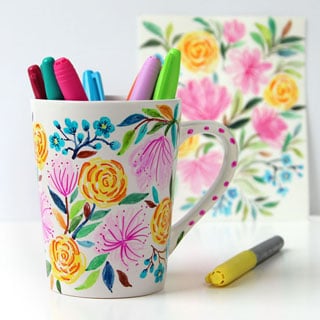
CHILDREN'S CORNER ... crafts
HOW TO MAKE AN ORIGAMI ALPHABET

PUZZLE
right picture, wrongly labeled
Butterfly BWG Jigsaw Puzzle
WORD SEARCH
| adapt always bail beware candle clear crash creep curse | dine energy enough fear flake frame friendly fundamental gains guard | hang honest instant lean longing meter moment movie | novel offense raise ready retain reward seem seen sense | splash stew stone street traffic waste wrong young |
SUDOKU ... very hard
solution:
QUOTE


CLEVER
EYE OPENER
Fashion Is in the Bag
A History of Handbags
randomhistory
From the ancient beaded bags of African priests to the haute couture tote of the modern lady of leisure, handbags have historically been both the carriers of secrets and the signifiers of power, status, and beauty. As the keepers of the equipment of daily life, handbags have been strongly influenced by technological and societal changes, such as the development of money, jewelry, transportation, cosmetics, smoking, cell phones, and the role of women in society.
Embracing its paradoxical role as both signifier and concealer, the handbag gestures toward a myriad of tantalizing psychological interpretations. The contents of a handbag have been seen as representing part of the Freudian unconscious, and the bag itself (as an empty receptacle) can be interpreted as female genitalia or even the womb. Indeed, the word “purse” was a slang word for the female pudenda from the seventeenth century (Steele and Borrelli 1999). Ancient, symbolic, and indispensable, the handbag has been a chameleon object, expressing (and carrying) the needs and tastes of both its wearer and its time.
Purse Precursors
Purses, pouches, or bags have been used since humans have needed to carry precious items. While “handbags” as a term did not exist until the mid-nineteenth century, ancient pouches made of leather or cloth were used mainly by men to hold valuables and coins (Foster 1982). Ancient Egyptian hieroglyphs show men wearing purses around the waist, and the Bible specifically identifies Judas Iscariot as a purse carrier.
Fourteenth and Fifteenth Centuries: Girdle Pouches
In the fourteenth and fifteenth centuries, both men and women would attach pouches to the most important feature of medieval garb: the girdle. Because pockets would not be invented for several hundred more years, wearers would also attach other valuables to their girdle, such as a rosary, Book of Hours, pomanders (scented oranges), chatelaines (a clasp or chain to suspend keys, etc.), and even daggers (Wilcox 1999). The drawstring purse would hang from the girdle on a long cord and would vary according to the fashion, status, and lifestyle of the wearer. Women particularly favored ornate drawstring purses which were known as “hamondeys” or “tasques” (Foster 1982).
Medieval purses were not strictly used for carrying money, but were also associated with marriage and betrothal, often depicting embroidered love stories. Purses, known as “chaneries,” were also used for gaming or for holding food for falcons. Ecclesiastical purses were highly significant and were used to hold relics or corporals (line cloth used in mass). The most important bag at this time was the Seal Bag which was made for the Keeper of the Great Seal, later known as the Lord Chancellor (Wilcox 1999).
Sixteenth and Seventeenth Centuries: Pockets and "Swete Bagges"
During the Elizabethan era, women’s skirts expanded to enormous proportions. Consequently, small medieval girdle purses were easily lost in the large amounts of fabric. Rather than wear girdle pouches outside on their belt, women began to wear their pouches under their skirts, and men would wear pockets (called “bagges”) made of leather inside their breeches (Foster 1982). Peasants and travelers might wear large satchel-like leathers or cloth bags diagonally across the body, as in Peter Brueghel’s painting, “The Elders Two Peasants” (Wilcox 1999).
In addition, in a time when personal hygiene was lacking, many aristocrats in the sixteenth century would carry what was called “swete bagges” or bags that were filled with sweet smelling material. Just as pomanders hung from the girdle in the fifteenth century, these swete bagges were filled with powder from sweet-smelling herbs and spices, such as lavender, or with perfumed balls of cotton. Swete bagges might also be stored with clothes and linens or set among sheets and pillowcases (Wilcox 1999).
Like their immediate predecessors, both men and women in the seventeenth century rejected the obvious use of bags and preferred to hang long embroidered drawstring purses under their skirts and breeches (Foster 1982). Purses were not only functional but they were also often used as conspicuous decorative containers for gifts, such as money, perfume, or jewels (Steele and Borrelli 1999). Toward the end of the century, purses became increasingly sophisticated, moving from a simple drawstring design to more complex shapes and materials.
Eighteenth Century: The Revolt against Underwear and Pockets
After the French Revolution, the full skirts of the ancient regime became less popular in favor of a more slender and narrow dress. These slender dresses left no room beneath for pockets and, consequently, pockets were discarded. Purses came back out into the open in the form of “reticules” or “indispensables” as the English tended to call them, suggesting that women had already largely developed a dependence on their handbags (Steele and Borrelli 1999). The French often parodied the women who carried the delicate bags that resembled previously hidden pockets as “ridicules” (Wilcox 1999).

Nineteenth Century: The Rise of the Handbag
Developments in science and industry during the Victorian era created a vast array of styles and fabrics which women could coordinate with the rest of their outfits. Though pockets returned in the 1840s, women continued to carry purses and spend an enormous amount of time embroidering them to show off for potential husbands, often marking the date and their own initials on their bags (Wilcox 1999). In keeping with the ideals of domesticity of earlier times, many women wore chatelaines that attached to the waist belt by a large decorated clasp (Foster 1982).
However, with the advent of the railroad, bags were about to experience a revolution. In 1843, there were nearly 2000 miles of railway lines in Great Britain. As more people traveled by train and more women became more mobile, professional luggage makers turned the skills of horse travel into those for train travel, and soon the term “handbag” emerged to describe these new hand-held luggage bags. Indeed, many of the top names of today’s handbags got their start as luggage makers (in contrast to the previously made purses and pouches which were made by dressmakers). For example, Hermes bags were founded in 1837 by Thierry Hermes, a harness and saddle maker, while Loius Vuitton was a luggage packer for the Parisian rich. Modern handbags still allude to luggage with their pockets, fastenings, frames, locks, and keys (Steele and Borrelli 1999).

1900-1920s: The Swinging Pochette and Egyptomania
Handbags in the early twentieth century became much more than just hand-held luggage. Women could choose from small reticules, Dorothy bags (now called dotty or marriage bags) with matching robes, muffs, and fitted leather bags with attached telescopic opera glasses and folding fans. Working women often used larger handbags, such as the Boulevard bag, leather shopping bags, and even briefcases which could be worn around the shoulder (Wilcox 1999). Handbags also included folders for the newly invented pound note which replaced the gold sovereign in 1914 (Foster 1982).
After WWI, and as more activities and travel opportunities became available for women, the long constricting layers and rigid corseting disappeared. Perhaps the most important development during this period was the “pochette,” a type of handle-less clutch, often decorated with dazzling geometric and jazz motifs, which women would tuck under their arms to give them an air of nonchalant youth. Rules for color coordination grew lax and novelty bags, such as doll bags, which were dressed exactly like the wearer, became popular. The discovery of King Tutankhamun’s tomb in 1923 inspired Egyptomania and purses began to reflect exotic motifs (Wilcox 1999).

1930s: Art Deco
By the 1930s, most of the bags used today had been invented, including the classic handbag which had a handles and a clasp frame, the clutch (a variation of the pochette), the satchel, and the shoulder bag. The 1930 bag reflected the Art Deco style which highlighted abstraction and celebrated new industrial materials, such as plastic and zippers (Wilcox 1999).

1940s: WWII and the Rise of Shoulder Bags
The war saw the smooth contours of the 1930s fashion change to a more military look. Bags became larger, squarer, and more practical, reflecting a desire to appear self-sufficient. As zippers, mirrors, and leather became scarce, designers turned to wood or plastic for frames and employed new synthetics such as rayon. The drawstring bag reappeared and was often homemade. Bags in Great Britain were made both to carry gas masks and to match an outfit. In France and America, as more women entered the workforce, they turned to shoulder bags (Foster 1982). After the war, the shoulder bag was relegated to country and travel features until its revival in the 1970s (Wilcox 1999).

1950s: Handbags Reach Cult Status
The post war economic boon of the 1950s catapulted handbags into cult status. Major designers such as Vuitton, Hermes, and Channel enjoyed a culture where accessorizing and color coordinating were held to an almost moral standard. In addition, Christian Dior’s new style, introduced in 1947, emphasized long skirts and tiny waists. As the antithesis of the military style, this new look signaled a new decade of femininity where a very small bag implied beauty and sophistication. The tiny handbag, like Cinderella’s tiny shoe, represented femininity and submission. Indeed, a woman holding a smaller handbag sends a different sexual message than a woman carrying a huge shoulder bag (Steele and Borrelli 1999).

1960s-1970s: The Rise of the Youth Culture
During the 1960s, rules of “appropriate” dress relaxed in response to the women’s’ movement and the rise of the youth culture. As the rules of correct dressing began to breakdown, the narrow long clutch was one of the earliest types of handbags to make the transition into the age of informality and youth fashion because it had always been thought suitable for a youthful look. The small and dainty shoulder bag with long chains or thin straps also began to dominate because it kept with informal child-like qualities of the miniskirt (Steele and Borrelli 1999). Such handbags highlighted the 1960 “swinging” fashion that was in stark contrast to the posed 1950s models.
Influenced by young travels to India in the late 1960s, larger satchels and fabric shoulder bags began to be popular. As opposed to machine-made goods, Afghan coats and bags, patchwork and embroidery, and former army shoulder bags also became popular (Wilcox 1999). In less than a decade, individual expression became popular and psychedelic patterns and later “flower power” introduced a romantic and ethnic look to fashion. By the end of the 1970s, slung shoulder bags returned with lots of buckles and zippers, suggesting that women were equipped for anything in the new age of feminism (Steele and Borrelli 1999).
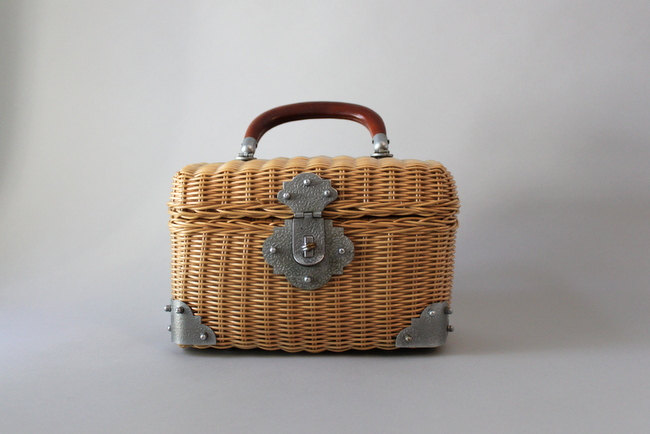
1980s-1990s: Conspicuous Consumption and the Unisex Bag
The 1980s’ handbags became associated with conspicuous consumption--and for the first time, a concern with health and fitness sports bags and shoes were an additional group of accessories that influenced high fashion. In addition, as technology introduced the calculator and filofax, work bags were designed for order and control. In 1985, Miuccia Prada introduced the black nylon knapsack that become the first totally unisex bag, and it remains ubiquitous. One of the brightest stars of the 1980s was the rise of Vera Bradley’s classic quilted handbag that reached sales of over $1million in just three years. By the early 1990s, small designer bags with giant Hs and CCs were all over London and New York, and only the trained eye could tell the real from the fake (Steele and Borrelli 1999).
Twenty-First Century: Anything Goes...Even a "Man Purse"
Handbags are currently made in a bewildering array of styles and materials, such as waterproof canvas, space age synthetics, and faux reptile skins. Designers continue to play with the paradoxes inherent in the handbag with transparent materials that both expose and conceal the contents of the bag. And handbags, which for so long had been associated with the feminine are now becoming more popular with men. Both the modern man and woman can strap on or sling over a hands-free bag and go. Its variety and adaptability highlight the handbag’s extraordinary potency and staying power.
|

Self portrait of the artists as a young man ... 1989
No comments:
Post a Comment